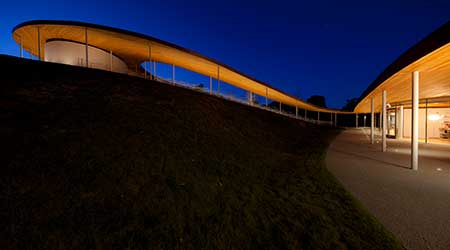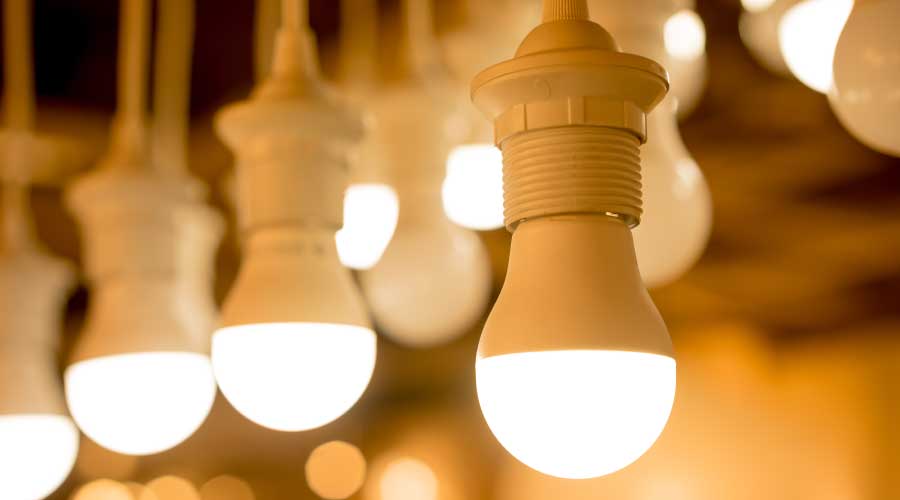 The lighting throughout the building interiors and exteriors at Grace Farms in New Canaan, Conn., works in partnership with the setting sun. As the trees across the valley are warmly lit at sunset, the building lighting ramps up, activating the wood ceilings and transitioning that radiance to the building’s surfaces. Gabe Guilliams
The lighting throughout the building interiors and exteriors at Grace Farms in New Canaan, Conn., works in partnership with the setting sun. As the trees across the valley are warmly lit at sunset, the building lighting ramps up, activating the wood ceilings and transitioning that radiance to the building’s surfaces. Gabe GuilliamsFurther LED Benefits: Enhanced Color, Flexibility of LED Light Sheets
Second of a four-part article looking at how FMs can justify an LED upgrade.
Two more benefits illustrate the value of LEDs.
3. LED light sheets. LED light sheets are very slim panels (reminiscent of acrylic panels) with perimeter embedded LED modules. The sheets have a matrix of linear cut grooves to refract light distribution from the perimeter onto the panel’s surface. With use of various diffusers, such as opal polycarbonate, a homogenous and uniform backlit effect can be achieved.
There are multiple uses for and advantages to this product. Applications range from uses such as retail display shelves, where the heat from the LED source can be dissipated at the edge boundaries with further reduction with the use of a metal bezel at the shelf edge. This allows heat-sensitive products such as perfumes to be placed on an illuminated surface for display purposes without any degradation to the products.
Other applications include providing backlit panels recessed flush within wall or ceiling surfaces where space is limited for use of conventional light boxes. The recent addition of variable color with such products further expands their use.
4. Color. LEDs can also give better saturation and rendering of color, as evidenced by the many exterior building facades now entertaining the use of color. The use of digital multiplexing, previously used for control of stage lighting and effects, is one of the most common control protocols regulating variable colors and the manipulation of pixels in both internal and external commercial lighting schemes.
The use of color can provide dramatic visual effects; however, the application of color requires careful consideration to ensure appropriate use, with coordinated external lighting schemes tending to work more successfully.
Farhad Rahim, associate lighting designer at BuroHappold Engineering, UK office, can be reached at farhad.rahim@burohappold.com. Gabe Guilliams, associate principal in Lighting, BuroHappold, New York office, can be reached at gabe.guilliams@burohappold.com.
Email comments and questions to naomi.millan@tradepress.com.
Related Topics:















